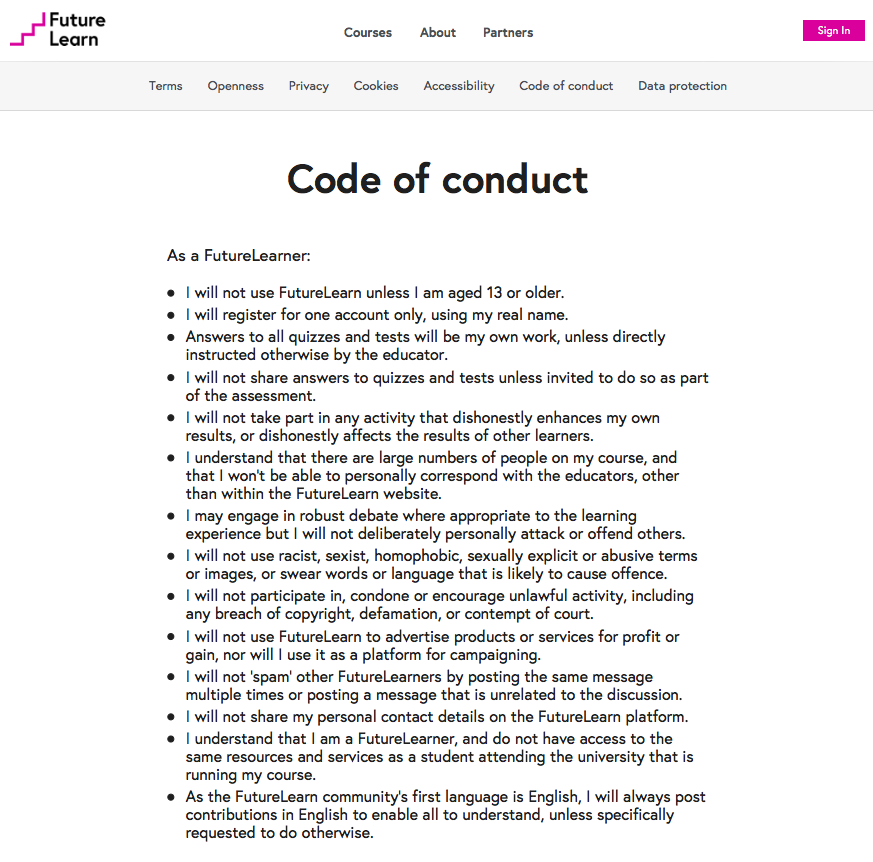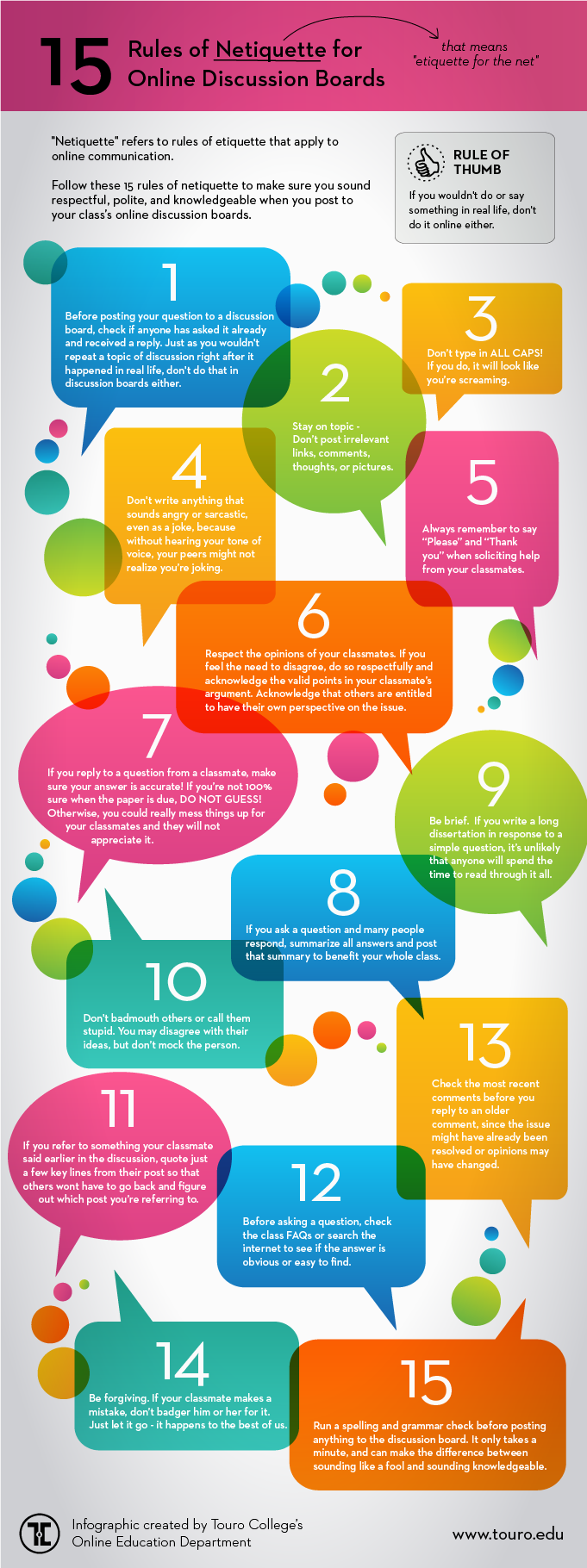1.3.2 Introduce Netiquette and Code of Conduct
| Site: | WMO Education and Training Programme |
| Cours: | Calmet Moodle Unit 1 - Design an effective learning environment |
| Livre: | 1.3.2 Introduce Netiquette and Code of Conduct |
| Imprimé par: | Invitado |
| Date: | samedi 27 décembre 2025, 11:30 |
Description
Technical guidance and constraints on attachments
1. Netiquette and Code of Conduct
When designing a course you will be making decisions about what communication tools to use. These may involve the use of Forums for discussions, or Wiki for collaborative writing. The course may make use of personal blogs, where students can be asked to write their reflections in a form of online diary, for example. No matter what sort of communication tools you choose, instructors and students will be involved in sharing ideas with each other online during the course. All the shared ideas and discussions will form part of the content of your course and will grow as the course takes place. Whilst this is desired and most of the time planned for, you must be aware that you will not have much control regarding this active and growing content that is created by the participants in the course.
When working in shared online spaces, it is important that all participants involved are well aware that they should:
- Treat others with courtesy and respect
- Safeguard confidentiality and personal security
- Avoid committing or supporting plagiarism
- Understand and respect copyright
While some experienced instructors and students will be aware of the above and naturally follow good network etiquette (also known as Netiquette – rules for acceptable online behaviour), it is important that a general code of conduct is clearly communicated to all participants before they start their activities.
2. Examples
Some examples of Code of Conduct used by course providers are presented to you in the following pages.
Note that whilst course providers will explore the general topics mentioned in the bullet points at the previous page, the depth of guidelines included in each point will depend on many aspects. For example, massive online open course (MOOC) providers may include details on age restriction while a corporate mandatory course may refer only to netiquette expected from employees attending the course.
Additionally, some course providers may give separate information about privacy and copyright liability regarding learners and providers. Your institution might already have this information mentioned elsewhere in their websites or Moodle area, so it is worthwhile looking for it and linking to the Code of Conduct.
2.1. Example 1
This example was taken from Future Learn, a company that offers a diverse selection of courses from leading universities and cultural institutions from around the world. It combines aspects of netiquette, online safety, plagiarism and copyright in a very short document. It is very appropriate to mature learners, who are already used to work and learn online, but it can be adapted to a more descriptive version that may be clearer to a beginner's audience.
Available online at https://about.futurelearn.com/terms/code-of-conduct/

2.2. Example 2
This example outlines 15 netiquette rules students should abide by while interacting in online discussions. The rules presented in this example would be appropriate to use with learners who do not have much experience learning online, but it can also be easily adapted to a more experienced group as a reminder of good netiquette. This infographic was created by the Online Education Department of Touro College.
Available online at http://blogs.onlineeducation.touro.edu/15-rules-netiquette-online-discussion-boards/
Please include attribution to the Online Education Blog of Touro College with this graphic.
